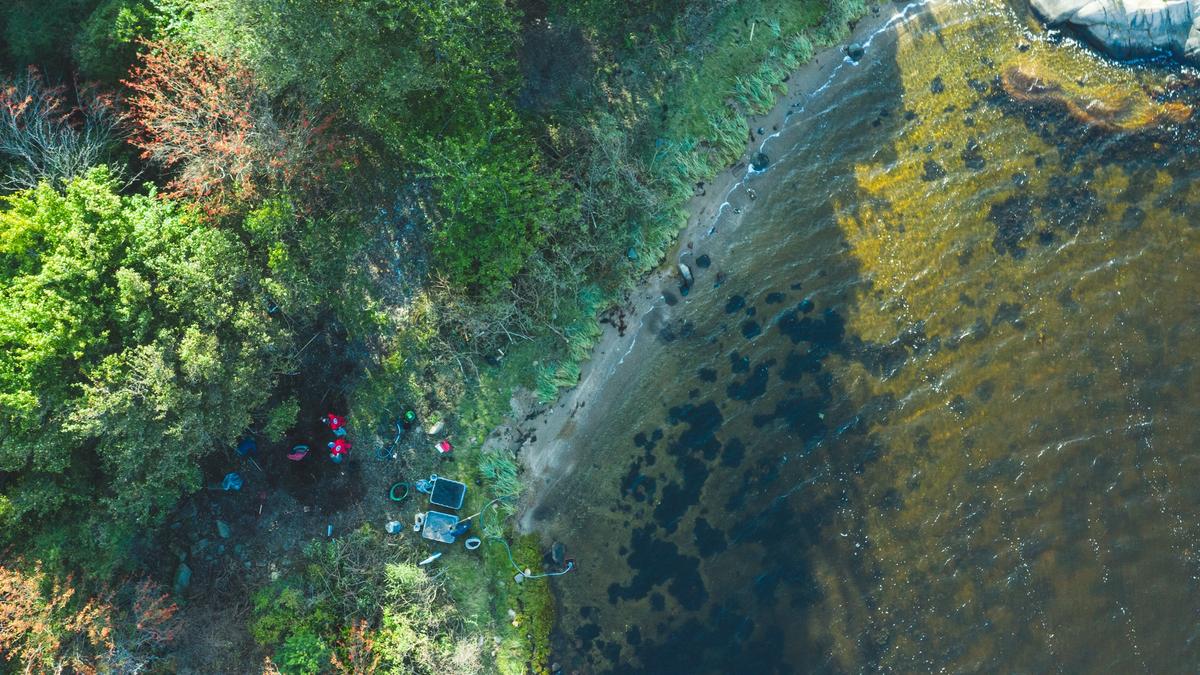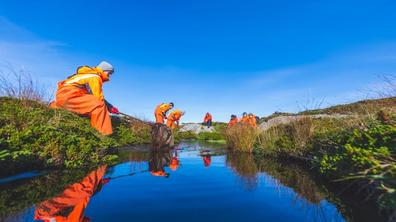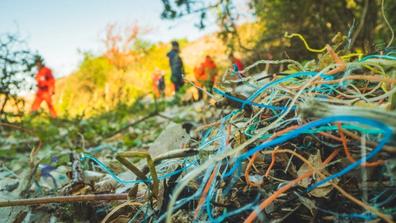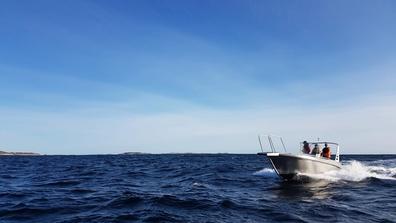Proper planning forms the basis for the successful execution of a clean-up operation. The level of detail must be adapted for each clean-up operation.
During the early planning phase, you must consider:
- Where will you carry out the clean-up activities
- Who will carry out the clean-up activities
- When will you carry out the clean-up activities
- Is it necessary to perform an inspection at the clean-up location
- Is the area protected
- Consider what equipment you need
- Consider the need for insurance
- Dialogue and coordination
- Transport of personnel and waste
Where will you carry out clean-up activities
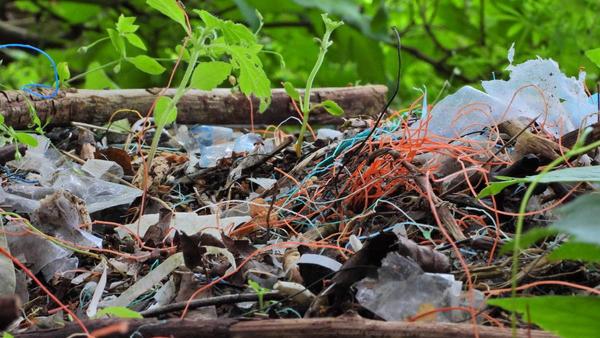
When you select an area for the clean-up operation, you should select a littered area. If you are unfamiliar with an area, you can obtain good advice and tips from someone who has local knowledge. This could be local residents, fishermen, the local authority, a waste management company, the outdoor council, local clubs and associations or others who organise clean-up operations in the area.
Through the national scheme Min bit av Norge (My Piece of Norway), you can adopt a beach or an area and ensure that it is kept clean.
In Rydde, you can find information about scheduled and completed clean-up operations in an area and you can also see where litter has been reported. Organisers must create the clean-up operation in Rydde when the clean-up location has been determined so that others can find out about the operation.
Select the clean-up area based on who will be performing the clean-up operation. If it is a school class, you should select an area that is accessible, but if it is experienced cleaners, you could choose a more challenging clean-up area.

Who will carry out the clean-up activities
Who will be performing clean-up activities in an area depends on the conditions at the clean-up location, the amount and type of waste and accessibility of the area. Clean-ups in inaccessible locations and vulnerable areas should be performed by experienced cleaners or professionals. Clean-ups in easily accessible areas with a low risk can be performed by volunteers. You should invite participants who can carry out clean-up activities in the selected area.
During planning, you should take into account who and how many people will participate in the clean-up operation. If the participants are experienced beach cleaners, you can plan differently than if they are people who have never participated in beach cleaning before and who require guidance and follow-up. If a clean-up operation is open to volunteers, you should inform the relevant participants.
When will you carry out the clean-up activities
There are several factors that affect when an area can be cleaned:
- The season
- Weather conditions
- Light conditions
- Wave and tidal conditions
- Consideration of flora, birdlife and fauna, e.g., nesting periods for birds
- Any bans on access in protected areas
Select a time that suits those who will participate in the clean-up activities, facilitate good working conditions for those performing clean-up activities and prevent negative environmental impact from the clean-up activities.
Is it necessary to perform an inspection at the clean-up location
If you are unfamiliar with the area, it may be appropriate to perform a site inspection in the clean-up area as part of the planning process. Inspections can provide useful information about several factors that you should take into account during planning:

- How much waste is there?
- What type of waste is there in the area?
- How many cleaners do you need and how many are there space for?
- What is the easiest way to access the area?
- What type of terrain is there in the area?
- What type of equipment do you need?
- How to transport waste from the clean-up area?
- Are there any special considerations relating to the area?
Is the area protected
Many protected areas have been established along the coast. You can find overviews of protected areas from various map services such as Rent hav.
The objectives of protected areas are to protect species, different habitats, and landscapes and to protect the areas against unwanted interventions. The purpose of the protection provisions for each protected area has been described in the protection regulations for the area and can be found at Lovdata.
Check the protection provisions to find out whether there are any special considerations you must keep in mind if you will be carrying out clean-up activities in protected areas. You should contact the administrative authority for the protected area prior to clean-up in order to notify them that you wish to perform clean-up activities and ask whether there are any special considerations to take into account.

The need for clean-up equipment
The organiser must consider the need for necessary equipment for a clean-up operation. The need will depend on e.g., clean-up location and waste type. Each participant is responsible for wearing appropriate clothing and suitable footwear.
The minimum equipment required for any clean-up operation is:
- Bin bags for putting waste in
- Gloves (ideally cut-resistant)
- Life jacket in the event of boat transport
- First-aid equipment
Even though a lot of waste can be picked up and placed straight into a bag, you may find that the following equipment is useful:
- Knife (preferably with a serrated blade)
- Litter pickers
- Rakes or forks
- Spade
- Crowbar
- Axe
- Hacksaw or saw
- Claw for pulling rope out
- Timber tongs
- High-visibility vest
- Knee pads
- Waders or dry suit
In areas with a lot of small pieces of waste, such as plastic pellets, it might be useful to use a leaf blower, industrial vacuum cleaner and sieve or strainer. Be careful not to remove biological material, small animals and insects when using this type of equipment.
Need for insurance
When organising clean-up operations, you must consider the need of insurance contracts. Relevant insurance includes accident insurance for beach cleaners, liability insurance for damage to third-party property and damage due to natural disaster. Such insurance will be in addition to insurance for vessels, vehicles and other equipment.
Dialogue and coordination
It may be necessary to obtain approval or enter into agreements with other parties prior to the implementation of a clean-up operation. Consider whether there is a need to contact and enter into agreements with:
- The landowner, if there is a need to provide information about the clean-up operation, ask for any permission to store waste prior to collection, to arrange events and similar. You can find information about the landowner for the area where you intend to perform clean-up activities at www.seeiendom.no or from the local authority.
- The County Governor, local authority or others with administrative authority for protected areas.
- Waste management companies concerning the delivery of waste.
- Carriers for the transport of clean-up personnel and/or waste.
- Individuals with local knowledge who may be able to provide useful information.
- Other parties that coordinate clean-up operations.
Ensure that proper information is provided to everyone who will participate in the clean-up operation. Provide information about the meeting point and time, the duration of the clean-up operation, contact information for the organiser and what participants need to bring.
Planning the transport of personnel and waste
The organiser must consider the need for transport of clean-up personnel and transport of collected waste from the clean-up location to an approved waste and recycling centre.

Transport of personnel will predominantly be by foot, using cars or other vehicles, by boat or a combination of these. The organiser must consider relevant modes of transport, assess the associated risks and plan transport from the meeting point to the clean-up area. It is important to check any parking possibilities if using cars. When using boats, it is important to check whether it is possible to land and moor boats at the clean-up location and whether it is possible to disembark from boats. Consider any requirements set down in regulations concerning the transport of personnel by sea, as issued by the Norwegian Maritime Authority.
The organiser must plan to deliver the waste to an approved waste and recycling centre. The organiser or clean-up personnel will, in many cases, transport and deliver waste to an approved waste and recycling centre. Otherwise, the organiser must enter into a collection agreement with a carrier that can transport waste from the collection site to an approved waste and recycling centre. The Collection Point feature in Rent hav can be used for this purpose by users who have their own login.
Final decision
Consider the weather forecast, tide table and wave alerts when making the final decision about the implementation of the clean-up operation.
If the pdf does not include images, please click Cancel and try again.


